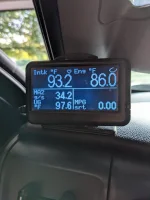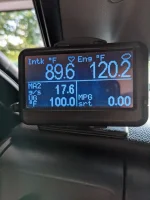I agree, there is no need for an argument. So please understand that I do not mean to be offensive, I just would like to keep from misinformation being spread. Correcting your statement isnt done for my own pride, but rather to keep other readers from relying on information that just isn't true.So while I am really not looking for an argument, you are telling me that oil splashed onto cylinder walls and connecting rods right after combustion stays cooler that the water in the block. The block does not magically get hot. Like a pan on a stove full of water the pan has to get hot to transfer the heat to the water. Now if you are saying that the oil in the pan after it has gone through the cooler has cooled down before it goes back to the engine is colder than the water sitting stationary in the block waiting for the thermostat to open then I might agree. It really depends on where and when you measure the fluid. But if you run an engine for 4 or 5 min on a cool day I guaranty the oil coming out of the oil filter return will be hotter than the water drained from the radiator. The water cannot get hotter than the block but the oil can and does.
While you are correct in stating that oil making it's way to the cylinder walls and rod/main journals will heat up, it does not do so at the rate of the coolant in the water jackets surrounding the combustion chamber and exhaust ports. On top of this, the oil being pumped through the engine is being pulled from the cold sump first, so it is cold when it reaches the mains/rods/cams, etc.
Oil becomes hotter than block temperatures because the coolant-to-oil heat exchanger is very small, and the oil is being "cooled" there by coolant that is already 195° or greater. Therefore, the primary purpose of the coolant-to-oil heat exchanger is to bring oil temps up more quickly, and to help regulate oil temps. They are often referred to as oil coolers, and this nomenclature is misleading. More often than not, true oil coolers are air-to-oil type, and are typically thermostatically controlled as well.
I'm not always the best at explaining these things, so maybe some others can chime in to fill in the gaps that I left. Cheers!


